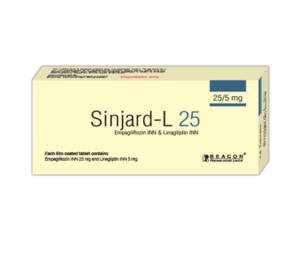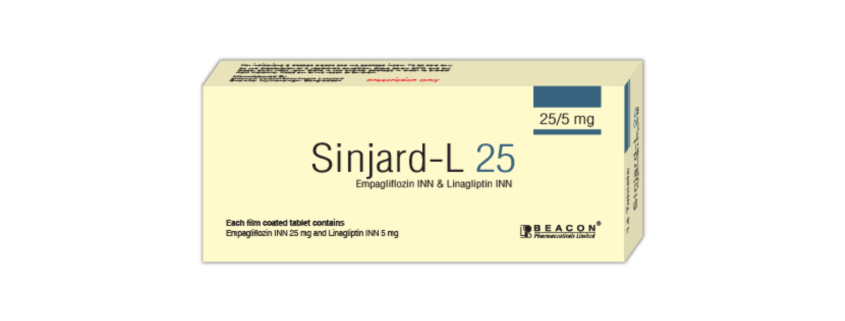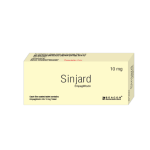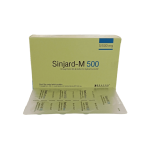Sinjard-L

Generic Name : Empagliflozin + Linagliptin
Indications
Linagliptin is indicated in the treatment of type 2 diabetes mellitus to improve glycaemic control in adults. As monotherapy: In patients inadequately controlled by diet and exercise alone and for whom metformin is inappropriate due to intolerance, or contraindicated due to renal impairment. As combination … Read more
Pharmacology
Empagliflozin: Sodium-glucose co-transporter 2 (SGLT2) is the predominant transporter responsible for the reabsorption of glucose from the glomerular filtrate back into the circulation. Empagliflozin is an inhibitor of SGLT2. By inhibiting SGLT2, empagliflozin reduces renal reabsorption of filtered glucose and lowers the renal threshold for glucose, and thereby increasing urinary glucose excretion.
Linagliptin: Linagliptin is an inhibitor of DPP-4, an enzyme that degrades the incretin hormones glucagon-like peptide-1 (GLP-1) and glucose-dependent insulinotropic polypeptide (GIP). Thus, linagliptin increases the concentrations of active incretin hormones, stimulating the release of insulin in a glucose-dependent manner and decreasing the levels of glucagon in the circulation. Both incretin hormones are involved in the physiological regulation of glucose homeostasis. Incretin hormones are secreted at a low basal level throughout the day and levels rise immediately after meal intake. GLP-1 and GIP increase insulin biosynthesis and secretion from pancreatic beta cells in the presence of normal and elevated blood glucose levels. Furthermore, GLP-1 also reduces glucagon secretion from pancreatic alpha cells, resulting in a reduction in hepatic glucose output.
Dosage & Administration
The dose of Linagliptin is 5mg once daily. When Linagliptin is added to metformin, the dose of metformin should be maintained and Linagliptin administered concomitantly. When Linagliptin is used in combination with a sulphonylurea or with insulin, a lower dose of the sulphonylurea or insulin, may be considered to reduce the risk of hypoglycaemia.
Patients with renal impairment: For patients with renal impairment, no dose adjustment for Linagliptin is required.
Patients with hepatic impairment: Pharmacokinetic studies suggest that no dose adjustment is required for patients with hepatic impairment but clinical experience in such patients is lacking. Elderly patients: No dose adjustment is necessary based on age. However, clinical experience in patients >80 years of age is limited and caution should be exercised when treating this population.
Pediatric population: The safety and efficacy of Linagliptin in children and adolescents has not yet been established. Linagliptin can be taken with or without a meal at any time of the day. If a dose is missed, it should be taken as soon as the patient remembers. A double dose should not be taken on the same day.



